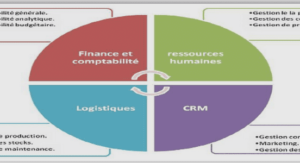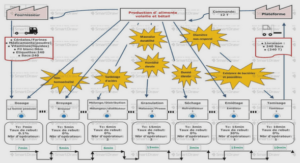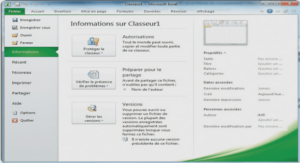Assessing seasonal and interannual changes in carbonate chemistry across two time-series sites in the North Western Mediterranean Sea
Résumé en français
Les mesures issues de séries temporelles pérennes sont cruciales pour comprendre les changements dans la chimie des carbonates océanique. En Méditerranée Nord occidentale (NW MedSea), l’évolution temporelle du système des carbonates a été étudiée d’après deux séries temporelles des paramètres du système des carbonates de 10 ans (acquises entre janvier 2010 et décembre 2019) mesurées aux sites d’échantillonnage ANTARES et DYFAMED situés en mer Ligure. À l’échelle saisonnière, la pression partielle de CO2 (pCO2) dans la couche de mélange est principalement contrôlée, aux deux sites d’étude, par la température. D’après les relations entre le carbone inorganique total (CT ), le nitrate et la température, les processus biologiques représentent le principal contributeur des variations dites non-thermiques. À l’échelle décennale, des changements significatifs dans la chimie des carbonates océanique ont été observés avec des tendances à l’augmentation du CT (+3.2 ± 0.9 µmol.kg−1.a−1 – ANTARES ; +1.6 ± 0.8 µmol.kg−1.a−1 – DYFAMED), associées à une augmentation de la pCO2 à une baisse du pH. Au site DYFAMED, les tendances à la hausse de CT peuvent s’expliquer par l’augmentation de la pCO2 atmosphérique et l’invasion de carbone anthropique depuis l’océan Atlantique. Au site ANTARES, l’augmentation observée de CT au cours de la dernière décennie est deux fois plus élevée qu’au site DYFAMED. En confrontant plusieurs hypothèses aux tendances obtenues pour les deux sites, il apparaît que les tendances plus élevées observées au site ANTARES pourraient être liées à la variabilité hydrologique rencontrée à ce site qui est induite par la trajectoire variable du Courant Nord.
Abstract
Sustained time-series measurements are crucial to understand changes in the oceanic carbonate chemistry. In the North Western Mediterranean Sea (NW MedSea), the temporal evolution of the carbonate system has been investigated based on two 10-year time-series (between January 2010 and December 2019) of monthly carbonate parameters measurements at the ANTARES and DYFAMED sampling sites in the Ligurian Sea. On a seasonal timescale, the seawater partial pressure of CO2 (pCO2) within the mixed layer is mostly driven by temperature at both sites. Based on the observed relationships between total inorganic carbon (CT ), nitrate and temperature, biological processes are the main driver of the non-thermal processes. At a decadale scale, significant changes in ocean chemistry with increasing trends in CT (+3.2 ± 0.9 µmol.kg−1.a−1 – ANTARES; +1.6 ± 0.8 µmol.kg−1.a−1 – DYFAMED), associated with increasing pCO2 trends and decreasing trends in pH have been measured. The CT increasing trend can be explained by the increase in atmospheric pCO2 and the anthropogenic carbon invasion from the Atlantic Sea at the DYFAMED site. At the ANTARES site, the observed increase in CT over the last decade is two time higher than at the DYFAMED site. By confronting several hypothesis to the trends obtained at both sites, we show that the higher trends observed at the ANTARES site could be related to the hydrological variability encountered at this site induced by the variability of the Northern Current trajectory.
Introduction
The ocean plays a critical role in mitigating climate change induces by human activities [IPCC, 2021] through CO2 exchanges at the air-sea interface and sequestration into deep waters. Annually, the ocean absorbs ca. 25% of the CO2 injected by anthropogenic activities [Le Quéré et al., 2018]. Ocean CO2 uptake induces an increase in hydronium ion concentration (i.e. a decrease in oceanic pH commonly named « ocean acidification » [Doney et al., 2009]) which represents a significant threat to marine organisms [Kroeker et al., 2013] and is likely to affect marine ecosystems [Feely et al., 2004]. Improving our understanding, quantifying the oceanic CO2 uptake but also predict scenarios and evolving adaptative strategies require sustained long-term observations of the carbonate system. To achieve these goals, sustained time-series measurements have been established in the framework of international programs [e.g. Tanhua et al., 2015]. Based on long-term time series analyses, positive trends in dissolved inorganic carbon (CT ) and seawater partial pressure of CO2 (pCO2) and negative trends in pH have been assessed over the global ocean [N. Bates et al., 2014; Lauvset et al., 2015].
More reactive to external forcing than other oceanic areas [Durrieu de Madron et al., 2011], the Mediterranean Sea (MedSea) is a semi-enclosed marginal sea with warm and highly alkaline waters prone to absorb CO2 from the atmosphere and transport it to the interior by active overturning circulation [Álvarez et al., 2014; Lee et al., 2011; Schneider et al., 2010]. As a consequence, several studies have reported a marked decline in the pH of the MedSea over the last few decades [e.g. Flecha et al., 2019; Hassoun et al., 2015b; Palmiéri et al., 2015; Touratier and Goyet, 2011]. Furthermore, the North Western (NW) Medsea is one of the few places of the world’s oceans where open ocean deep convection can occur [Marshall and Schott, 1999] in consequence of intense atmospheric forcing and oceanic preconditioning. From 2009 to 2013, deep intense mixing events occurred in this region during which the mixed layer depth reached the seafloor every winter at about 2500 m [Bosse et al., 2021; Testor et al., 2018] in the Gulf of Lions (GoL) area, whereas the offshore Ligurian area was mainly impacted by the convective events occurring in 2012 and 2013 [Margirier et al., 2020]. Due to this bottom-reaching convection, fresh and cold surface wtaers are more deeply mixed with the intermediate and deep waters, and these upward movements inject nutrients and fuel phytoplanktonic growth [Bosse et al., 2021]. In 2018, hydrological observations highlighted convection down to at least 1800 m depth [Margirier et al., 2020].
In the NW MedSea, in the frame of the JGOFS France Program, the DYFAMED (Dynamique des Flux Atmosphériques en MEDiterranée) time-series [Coppola et al., 2021] has been initiated in 1991 to monitor the evolution of the physical and biogeochemical properties in the Ligurian Sea [Marty, 2002]. The DYFAMED site is isolated from lateral inputs by the presence of the permanent Ligurian frontal jet flow (also named Northern Current – NC) that limits the exchanges with the coastal zone [Millot, 1999]. Also, this site is outside the surface Atlantic cyclonic water and the underlying vein of Levantine Intermediate Waters [Bethoux et al., 1982], causing an isopycnal doming [Prieur et al., 2020]. Therefore, this site is sheltered from the NC [Andersen and Prieur, 2000] and isolated from riverine inputs by a strong horizontal density gradient [Niewiadomska et al., 2008].
Figure 4.1 – Map of the sampling sites ANTARES (42°48’N – 06°05’E) and DYFAMED (43°25’N – 07°52’E) in the North Western Mediterranean Sea. The blue arrows indicate the two main winds blowing in this area. The main features of the circulation are represented by grey arrows: the Northern Current, the Western Corsica Current and the Eastern Corsica Current. The area in the Gulf of Lions indicates the Dense Water Formation (DWF) site derived from chlorophyll satellite image (in dashed line because of its variable location over years).
Following the DYFAMED initiative, the ANTARES (Astronomy with a Neutrino Tele-scope and Abyss environmental RESearch) time-series has been developed in 2009 [Lefevre, 2010]. Whereas being outside of the deep convection area occurring in the GoL, the ANTARES site is situated in a key zone conditioning the behaviour of the NC down-stream [Petrenko, 2003]. Also known as the Liguro-Provençal current, this boundary current results from the merging, in the Ligurian Sea, of two currents flowing northward on both sides of Corsica (Fig.4.1). Reinforced by the wind stress along its pathway [Herbaut et al., 1997], if flows along the continental slope with a cyclonic circulation dominated by the geostrophic flow. The NC is marked by seasonal variability [Albérola et al., 1995; Birol et al., 2010] and baroclinic instabilities [Millot, 1991]. Moreover, numerous studies have reported the presence of submesoscale eddies in the NW MedSea that can advect newly formed deep waters away from the GoL convection area [Bosse et al., 2016; Damien et al., 2017; Waldman et al., 2017] and interact with the NC feature [Testor and Gascard, 2006]. The ANTARES and DYFAMED time-series are part of the French MOOSE (Mediterranean Ocean Observing System for the Environment; https://www.moose-network.fr – Coppola et al. [2019]) and European EMSO-ERIC (European Multidisciplinary Seafloor and water column Observatory – European Research Infrastructure Consortium; http://emso.eu) programs that coordinate and maintain long-term observations in the NW MedSea.
Based on data acquired in the Ligurian Sea, several studies have shown the control of thermal, biological, and physical processes on the seasonality of the seawater pCO2 [e.g. Copin-Montégut et al., 2004; D’Ortenzio et al., 2008; Hood and Merlivat, 2001]. Merlivat et al. [2018] assessed that temperature and CT have the strongest influence on the seawater pCO2 variability. Defined as a blooming area by D’Ortenzio and Ribera d’Alcalà [2009], the NW MedSea experiences a well-defined bloom during late winter-early spring months that leads to a total nutrients depletion. The nutrient replenishment, which is tightly related to the intensity of the winter-time deep convection, allows the occurring of biological processes [e.g. Bégovic and Copin-Montégut, 2002; Marty et al., 2002]. In situ measurements of air-sea CO2 fluxes highlighted a gradual change of the area from a source to a sink [Bégovic and Copin-Montégut, 2002; Copin-Montégut et al., 2004; Louanchi et al., 2009]. Moreover, a recent synthesis of the carbonate system data recorded in the Ligurian Sea between 1998 and 2016 [Coppola et al., 2020a] reported both clear seasonal cycles and temporal trends for sub-surface waters. In this area, positive trends in CT , total alkalinity (AT ) and pCO2 and negative trends in pH have been assessed over the 18-year period.
This study presents ten-year of carbonate chemistry data collected between January 2010 to December 2019 in the NW MedSea, at the ANTARES and DYFAMED sites, intending to highlight the main drivers of the temporal carbonate system variability at each site. In this paper, these two time-series sites positioned at less than 90 NM of distance but located at distinct hydrological sites with respect to the NC will be studied, with the attempt to identify the main factors influencing each site. With a focus on the carbonate data within the mixed layer, this work will (1) describe the dataset and the particularity of each site, (2) evaluate the drivers of the seasonal carbonate chemistry variability and, (3) estimate and identify the main drivers of carbonate chemistry changes on longer timescales. The analysis of these two time-series located in the same oceanic basin will provide insight of the added value of these dual sampling compare to a single site approach.
Material and methods
Sampling sites
The MOOSE-ANTARES/EMSO-LO (named ANTARES hereafter) observatory site is located 40 km off the French Mediterranean coast (42°48’N, 06°05’E) where the water depth is 2475 m. The ANTARES site is a astrophysical detector for high-energy neutrinos where an oceanographic observatory has been developed. The MOOSE-DYFAMED (named DYFAMED hereafter) observatory site is located ca. 50 km off Cape Ferrat in the central zone of the Ligurian sea and has a depth of 2350 m (43°25’N, 07°52’E).
Measurements
Measurements were carried out monthly at the DYFAMED and ANTARES sites in the NW MedSea (Fig.4.1) with the R.V. Tethys II. A CTD-Rosette was deployed (1) to acquire data with sensors (Conductivity Temperature and Depth – CTD and associated parameters) along vertical profiles and (2) to collect discrete seawater samples from Niskin bottles for chemical analysis. A detailed description of the sampling methodology and the CTD sensors can be found in Coppola et al. [2018b] for the DYFAMED site. The same procedure is applied at ANTARES. Samples for CT and AT were collected into acid-washed 500 cm3 borosilicate glass bottles, poisoned with 200 mm3 of a 36 g.dm−3 HgCl2, as recommended by Dickson et al. [2007] and stored in the dark at 4 °C. Analyses were performed after few months of storage (less than 6 months). Measurements of CT and AT were performed simultaneously by potentiometric acid titration using a closed cell following the methods described by Edmond [1970] and Dickson and Goyet [1994]. Analyses were performed at the National Facility for Analysis of Carbonate System Parameters (SNAPO-CO2, LOCEAN, Sorbonne University – CNRS, France) with a prototype developed at LOCEAN. The average accuracy of AT and CT analysis (estimated from repeated measurements of Certified Reference Material provided by Prof. Dickson’s laboratory from the Scripps Institution of Oceanography, San Diego) is between ± 2 and 5 µmol.kg−1. Samples for dissolved inorganic nutrients were collected and analysed following the protocol of Aminot and Kérouel [2007]. Over these ten-year of sampling, 44 and 60 samples for carbonate chemistry measurements have been obtained at ANTARES and DYFAMED, respectively.
Derived data
Estimation of the mixed layer depth
The Mixed Layer Depth (MLD) has been computed using a density threshold of 0.03 kg.m−3 with a reference depth of 10 dbars [D’Ortenzio et al., 2005]. Vertical profiles of temperature and salinity from the CTD were used to estimate the density. When no value was available at 10 dbars, the shallowest value available above 20 dbars was used.
Carbonate system derived parameters
Seawater carbonate system parameters were derived from AT and CT values with the software program CO2SYS-MATLAB [van Heuven et al., 2011] using silicate and phos-phate concentrations. As recommended for the MedSea by Álvarez et al. [2014], the carbonic acid dissociation constants K1 and K2 from Mehrbach et al. [1973] as refitted by Dickson and Millero [1987] and the dissociation constant for HSO−4 from Dickson [1990] were used. Uppström [1974] was used to calculate the ratio of total boron to salinity and Dickson and Riley [1979] to calculate the hydrogen fluoride constant KF . To remove the impact of salinity variations (evaporation/precipitation) on AT and CT values, salinity-normalised AT (NCT ) and CT (NCT ) were calculated by dividing by in situ salinity and by multiplying by 38.





